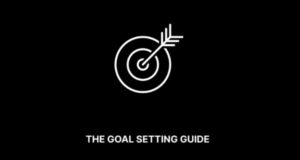The Method Episode #9

360 Delegation
Delegating work is a challenge we all face eventually.
Delegation is the key to scaling up your business and giving yourself the time to focus on the important stuff.
It’s never as simple as it sounds, though, and we’ve found it to be one of the most frustrating parts of running a business.
So we wanted to share a method we’ve been using that might work called 360 delegation.
The Process
First, create a shareable document like a google doc.
Add three sections to your document.
• Vision
• Resources List
• Definition of done
Vision
In this section, describe what you want to be accomplished.
• What does completion look like?
• Why do you need this completed?
• When should they start?
• What are the task milestones?
• When do you need this finished?
• What are the stakes if this goes well? Or poorly?
• Show a sample of success like a screenshot, a picture, or a video.
Resource List
Now share with them every resource they need to complete the task.
• What software and logins do they need?
• Who and how do they make contact with the right people?
• Do they need access to money, and how do they get access?
• Is there a checklist to help them work through the task?
• Have you created guidelines for them to follow?
List everything here.
Definition of Done
Here you want to explain and show what a finished job looks like.
• How do they know when the job is finished?
• Do you have any minimum criteria for accepting their work?
• What do you need to see to sign off on their work?
Make this as definitive as possible.
Now share this document with your team, give them a QnA opportunity and check off the completed work for the first few attempts.
From the Best

Setting Goals Like A Boss
Sahil Bloom is a former VC managing $3.5 billion, an angel investor in 30+ companies, mentored by Tim Cook, and one of the most read twitter accounts on finance and investing.
At 31 years of age, that’s pretty impressive.
Not that those achievements should necessarily mean anything to me or you, but it shows that he’s consistently been able to go after and get what he wants.
Sahil is a big believer in setting goals (not resolutions), which is his process.
1. Set the Stage
2. Identify BHAG
3. Work Backwards
4. Establish Process Goals
5. Track & Adjust
Setting The Stage
Establish the categories that you’ll create goals for.
For Sahil, this is:
• Personal
• Professional
• Health
For each category, you only have room for:
• 1 BHAG (Big Hairy Audacious Goal): Your big, bold goal.
• 1 Connected Medium-Term Goal: Interim goal on the path to the BHAG.
• 2-3 Daily Process Goals: Daily actions and habits.
Identify BHAG
Your BHAG—Big Hairy Audacious Goal—is exactly what it sounds like. It should be big and ambitious.
This is your North Star for the year.
You can only have one BHAG for a category! Too many, and you get goal competition and paralysis.
Write them down, print them out, put them on your wall if you want. Whatever works for you.
Work Backwards
Work backwards from your BHAG to identify one medium-term goal connected to it.
If you imagine your year as a mountain and your BHAG is the summit, the connected medium-term goal is a mid-climb campsite. You can’t reach the summit without reaching this point—all roads lead directly through it.
Establish Process Goals
Process goals are the key to this method.
Find 2-3 daily actions you need to take to create tangible, compounding progress towards your BHAG. These should be the SIMPLEST daily actions—your “atomic units” of progress in a given arena.
This might be 30 minutes of movement per day for a fitness goal.
Track & Adjust
The daily process goals should be easy to track and adjust.
Jerry Seinfeld would famously hang a massive calendar on his office wall and use a red marker to put an X over every day that he completed an hour of writing. It wasn’t about the writing being good. It was simply about the daily action.
This may work for some people but not for others. Find what works for you.
“There is no reason to risk what you have and need for what you don’t have and don’t need.”
~ Morgan Housel
Thinking Out Loud

A Rationale Approach For 2022
Being sensible here, there’s a good chance 2022 will present more challenges than 2021 for many of us.
As the year progresses, I expect to see these challenges shift from more of a biological nature to economic.
I don’t see many getting off lightly here. Inflation and supply issues could lead to stagflation or difficult trading conditions.
In the face of high uncertainty, a business can be defined three ways.
They can be fragile, robust, or anti-fragile. The fragile break easily, the robust are resistant to ‘damage’, and the antifragile prosper from ‘damage’.
Although it is possible, I don’t have the room to discuss prospering from chaos here. Instead, I’ll look at a couple of ways that a business can become robust in the face of chaos.
Margin of Error
The first and most boring but easiest to introduce is margin of error. Whether via cash on hand or cash flow in uncertain times, it seems wise to increase your margin of error.
This means holding more cash on hand and extending your runway. I.e. how long you can operate without revenue. Or increasing your cash flow by reducing unnecessary expenses, owners drawings, or purchases.
These exercises never seem worthwhile until it’s too late.
Speed
The second is speed which in this context means increasing your ability to react. Usually, I’d suggest that reacting is a terrible habit, but it might be helpful here.
You introduce speed to a business by reducing commitments to long-term projects and increasing the frequency of planning for them.
In software development, this is called sprints. Because of the competitive and fast nature of the SaSS industry, companies need to adapt quickly to changing market conditions. So they work in 6-week blocks.
They ‘sprint’ for six weeks, then stop re-assess and plan for another six weeks.

